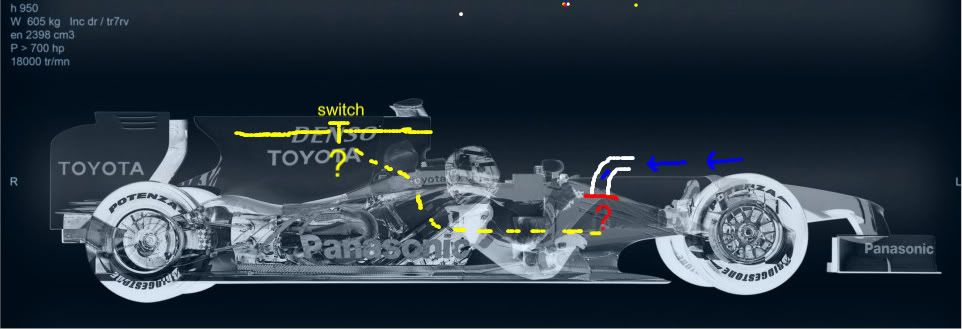Ringo I'm not really sure what you're suggesting.
when a body moves through a fluid, the friction that is experienced is due to molecular adhesion forces. We reduce the friction by controlling the gradient of the adhesion between layers of air and the body. Hence the boundary layer is slow moving but the layer above it moves quicker and the layer above that even quicker. The cohesive forces between air molecules is greater than the adhesive forces between air and epoxy resin. Hence the energy required to move the air molecules is at a minimum. Add turbulence and the molecules require more energy to break down that turbulence.
So when air molecules move over a wing the boundary layer as we call it is a thin layer of air that is adhesively attracted to the wing material but cohesively bonded to the air around it.
This is when we have smooth flow and most streamlined since we are not introducing molecules traveling in the opposite direction exerting an adhesive force on the wing but worse, requiring a lot of energy to return to rest. that energy is taken from the body moving through it.
Hence we have the ideal conditions for creating the lowest possible pressure (smooth non turbulent flow).
Naturally turbulence is a fact of life but we try to minimise it in the boundary layer to reduce the energy absorbed from the body.
Wake is turbulent air that's created by the difference in velocity of two air streams meeting. It consists of cohesive bonded atoms of gas rearranging themselves. This rearrangement absorbs energy hence wing designers want the wake to be as small as possible and if possible to not be in physical contact with the body/wing/fuselage since that energy will serve to retard the body, hence airbrakes are so effective.
when a wing stalls, the turbulent flow coupled the wake to the body of the object and that absorbs energy i.e. take more power to drive.
So stalling a wing in an already massive wake is not the point. where the wake interact with the body is important. if the wake is already in contact with the wing it absorbs energy and requires more power to drive.
Now as far as flap blowing is concerned, in my experience, x2 or x3 freestream velocity is not required.
On aircraft they use flap blowing for heavy lift vehicles because the trade off to be made is huge.
An aircraft is designed to be efficient at a certain altitude. Engines can produce a lot of thrust at low altitude but often they reach max performance at maybe 5000m to 10,000m
its at this operating altitude that the wings are designed to be most efficient. At low altitudes the create a lot of drag which absorbs some lift capacity.
Remember CoD is proportional to velocity, surface area and density.
Hence to improve efficiency at low altitude while maintaining high altitude performance blowing the flap to fool it into thinking the aircraft is traveling much faster is desirable.
In F1, if they could blow the flap with a compressor, i.e the engine, they would but it's not allowed so they have to make use of what they have, pressure gradients at different parts of the car.
There are instances where (forgive me) vortices are used to add energy into a freestream but in all those cases there is a powerful pump behind it. I've never seen it applied in practice either, just in experiments.
The (forgive me) vortex that comes off the F/A-18 forward chines is a side effect of the chine shaping. The chine is there to increase the effective wing area without adding wingspan. Those chine are useful for maintain angle of attack through very hard high speed turns like trying to evade a Vympel AA-11 thrust vectoring A-A missile.
The Mig -29 uses a lifting body shape to achieve the same thing only more efficiently.
back to F1 cars...
I don't believe the vertical nature of the upper element of the rear wing is a great concern. Its essentially an upside down flap that many aircraft use to improve lift at low speeds
without stall.
What is important is the AOA of each element to the stream it. The airstream approaching the upper element is nearly vertical already, but still coupled.
In a aircrafts flap, if the flap stalls the aircraft does not speed up in its glide path, it slows down and loses altitude, compounding the problem. The stall has slowed down the airflow but it also slows the aircraft down because the body s now pulling a much greater mass of air behind it (wake)
Same for an F1 wing, stall the wing, the flow decouples and the wake attaches to the car, slowing it down. You certainly don't want that wake dragging along coupled to the wing. You want that air to flow off the wing smoothly and create turbulence away from the wing and the car.
Very tough to achieve with an F1 car but hence the desire to make the rear of the car as small as possible. This way the car can allow a much larger volume of air to pass around the rear and fill in the wake after it has left the wings and diffuser.
Going faster is all about not stalling (this applies to all things in life

)


